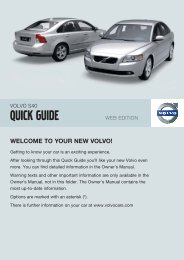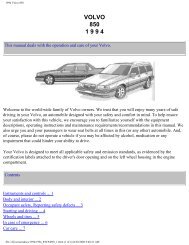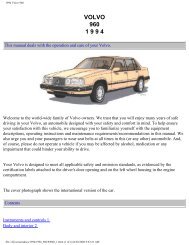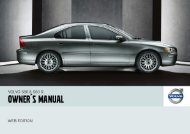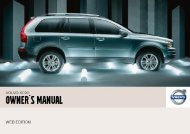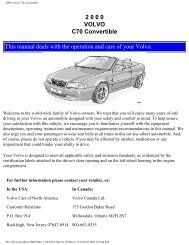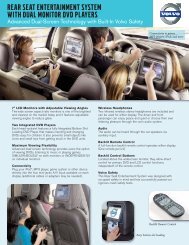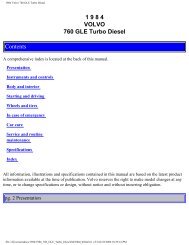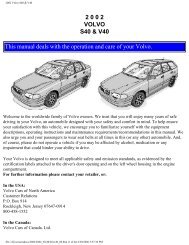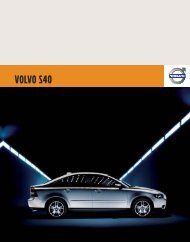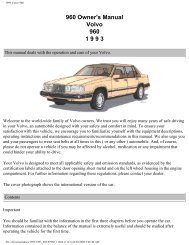V50 w646.book - ESD - Volvo
V50 w646.book - ESD - Volvo
V50 w646.book - ESD - Volvo
You also want an ePaper? Increase the reach of your titles
YUMPU automatically turns print PDFs into web optimized ePapers that Google loves.
07 Wheels and tyres<br />
Tyre pressure<br />
Recommended tyre pressure<br />
Checking the tyre pressure<br />
Check the tyre pressure regularly.<br />
NOTE<br />
Tyre pressure decreases over time, this is a<br />
natural phenomenon. Tyre pressure also<br />
varies depending on ambient temperature.<br />
07<br />
The tyre pressure label on the driver’s side<br />
door pillar shows which pressures the tyres<br />
should have at different load and speed conditions.<br />
Stated on the decal:<br />
• Tyre pressure for the car’s recommended<br />
wheel size<br />
• ECO pressure<br />
• Spare wheel pressure (Temporary Spare).<br />
Even after several kilometres of driving the<br />
tyres warm up and the pressure increases, so<br />
air must not be released if the pressure is<br />
checked when the tyres are warm, while the<br />
pressure must be increased if it is too low.<br />
Inadequately inflated tyres adversely affect<br />
fuel consumption, tyre lifespan and the car’s<br />
roadholding. Driving on tyres with tyre pressure<br />
that is too low can also result in the tyres<br />
overheating and disintegrating.<br />
For information on the correct tyre pressure,<br />
refer to the tyre pressure table on page 159.<br />
("Cold tyres" means the tyres are the same<br />
temperature as the ambient temperature.)<br />
Fuel economy, ECO pressure<br />
At speeds under 160 km/h, the general tyre<br />
pressure for full load is recommended in order<br />
to obtain optimum fuel economy.<br />
Tyre pressure affects travelling comfort, road<br />
noise and steering characteristics.<br />
158



